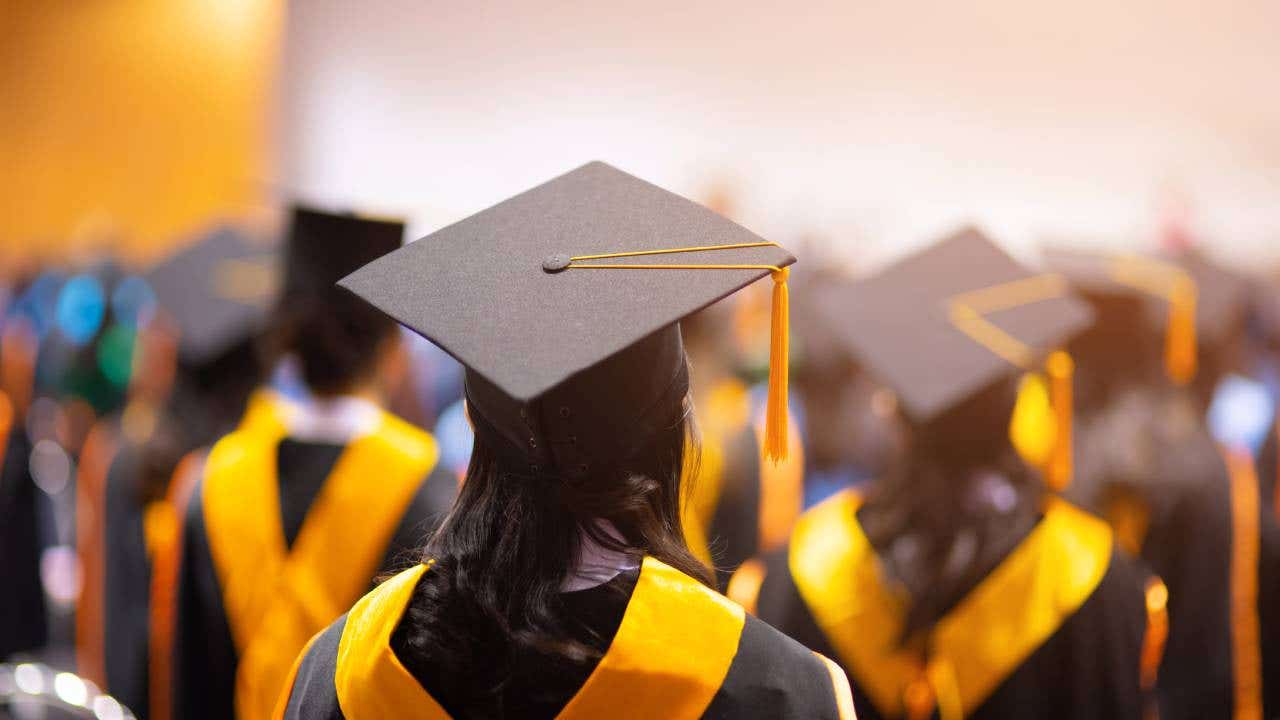How the student loan pause affects borrowers: 2024 data and statistics

The Bankrate promise
At Bankrate we strive to help you make smarter financial decisions. While we adhere to strict , this post may contain references to products from our partners. Here's an explanation for .
Key takeaways
- Even though payments have been due since September, the Biden Administration implemented a student loan policy that protects borrowers from defaulting on their balance until 2025.
- Since president Biden took office, over 3.6 million borrowers have received federal student loan forgiveness.
- SAVE, the most recent IDR plan, approved another 74,000 borrowers for relief earlier in the month.
The Trump administration started the federal student loan payment pause — also known as the administrative forbearance period — on March 13, 2020, to ease the financial burden caused by the COVID-19 crisis. After repeated extensions, the pause officially ended in October 2023. Payments have resumed and interest has been accruing since September 2023, but default isn’t in the picture until at least next fall.
According to a California Policy Lab and UCI Law policy brief, three in 10 student loan borrowers were at high risk of missing their payments once the extension ends. In an attempt to prevent widespread student loan default, the Biden Administration recently implemented a temporary safeguard for borrowers. Through Sept. 2025, borrowers won’t be at risk of defaulting on their balance if they fail to make their payments.
Here’s why the Biden administration may have implemented the policy and how you can prevent defaulting on your federal loans once in the future. resources you can use to prepare.
Key student loan payment pause takeaways
What: The payment pause was federally mandated and applied to all borrowers for 3.5 years. Payments and interest accrual resumed in Oct. 2023, but the temporary default pause will continue through Sept. 2025.
Why: Only 60 percent of the 22 million federal student loan borrowers made payments by mid-November after the payment pause was lifted late last year.
Student loan forgiveness statistics
Even though President Biden’s mass federal student loan forgiveness plan was struck down in 2022, there are a plethora of federal forgiveness programs for those who qualify. According to the White House, billions of federal borrowers meet financial requirements for forgiveness. Here are some recent numbers on federal student loan forgiveness through existing programs.
- In Dec. 2023, another 80,000 borrowers received forgiveness through revisions made to Public Service Loan Forgiveness (PSLF) program and Income Driven Repayment (IDR) plans.
- Under PSLF and IDR, $11.7 billion in federal student loans was forgiven in December for nearly 513,000 borrowers with a total and permanent disability.
- In 2023, 6 million students received the federal Pell Grant.
- Direct PLUS loans have the highest interest rate — 8.05 percent — of all federal student loan products.
- As of 2024, about 92 percent of all U.S. student debt is federal and around 8 percent is private.
- By 2024, the PSLF success rate is expected to hit over 50 percent.
Student loan forgiveness over time
Below are some key statistics about how federal loan forgiveness programs have impacted borrowers over time.
- In Q3 2023, the national student loan balance hit $1.6 trillion.
- When the payment pause ended last October, only 60 percent of federal student loan borrowers made a payment by mid-November. From August 2020 through December 2021, nearly 60 percent of federal borrowers were in active deferment due to the payment pause.
- Before revisions made in the past few years, only 32 students had ever received full forgiveness through income driven repayments through the program
- 98 percent of PSLF applications submitted between Nov. 9, 2020, and Sept. 30, 2021, failed to meet requirements for forgiveness.
- As of October 2023 data , there’s $191 billion in outstanding Federal Family Education Loans. The program was discontinued in 2010.
- As of August 2022, the borrower defense to repayment loan forgiveness program has received over 630,000 applications, and 165,163 have been approved.
- Since 2009, Teacher Loan Forgiveness has discharged a total of $3.7 billion in student debt.
- As of December 2023, the Biden administration has forgiven $132 billion in federal student debt for over 3.6 million borrowers.
Other student loan forgiveness programs
Here are a few of the most popular forgiveness programs, who qualifies and how to apply.
Public Service Loan Forgiveness
PSLF forgives public servants’ remaining federal student loan balances after making 120 qualifying payments. To qualify, borrowers must consolidate their federal debt into a Direct Loan, enroll in an income-driven repayment plan and work for a qualifying employer in the public service sector.
- In 2022, the program requirements were permanently amended, making it easier for borrowers to achieve forgiveness.
- Before the waiver that expired in 2022, PSLF had a 98 percent rejection rate.
- As of October 2023, almost $51 billion for over 750,000 borrowers was forgiven through PSLF.
Income-driven repayment plans
IDR plans are alternative repayment options that base your monthly payments on your annual income and your family size. The five plans forgive your remaining student loan balance after you make 20 to 25 years of eligible payments.
- Under PAYE, the lowest-earning individuals are projected to receive over four times as much forgiveness than the highest-income borrowers.
- SAVE, a new IDR plan, was launched last August and as of November 2023, 5.5 million borrowers are enrolled.
- Under the SAVE plan, those who make under $32,800 yearly or those in a family of four making under $67,000 yearly have a $0 federal student loan payment.
Teacher Loan Forgiveness
Teacher Loan Forgiveness is offered to teachers who are employed full-time for at least five academic years at an eligible school. Special education instructors and secondary school science and math teachers are eligible for up to $17,500 in federal student loan cancellation, while other teachers are eligible for up to $5,000.
- In 2022, over $223 million in federal debt was forgiven through TLF.
- Nearly 24,000 teachers received debt discharge in 2022.
- Over $3.6 billion in student loan debt has been discharged since the program’s origination.
Student loan payment resources
When it comes to maximizing your student loan forgiveness and managing your balance, after the payment pause expires, knowing how to access relief resources is crucial.
You should first if you qualify for income-based repayment plans or career-based forgiveness, like PSLF. If you qualify, you could stand to have a large chunk — or even all — of your federal loans forgiven. If you’ve exhausted all of your options, you can consider refinancing your loans. When you refinance, you take out a single private loan that replaces your federal and private student loans.
While many refinance to score better terms or a lower rate, it should be a last resort for those with federal loans. You’ll lose all your federal benefits and protections once you refinance — including hardship and relief plans.
Related Articles

Forecast: Big drops in HELOC rates, modest declines for home equity loans in 2024


As student loan payments resume, financial regrets and stress grip borrowers
